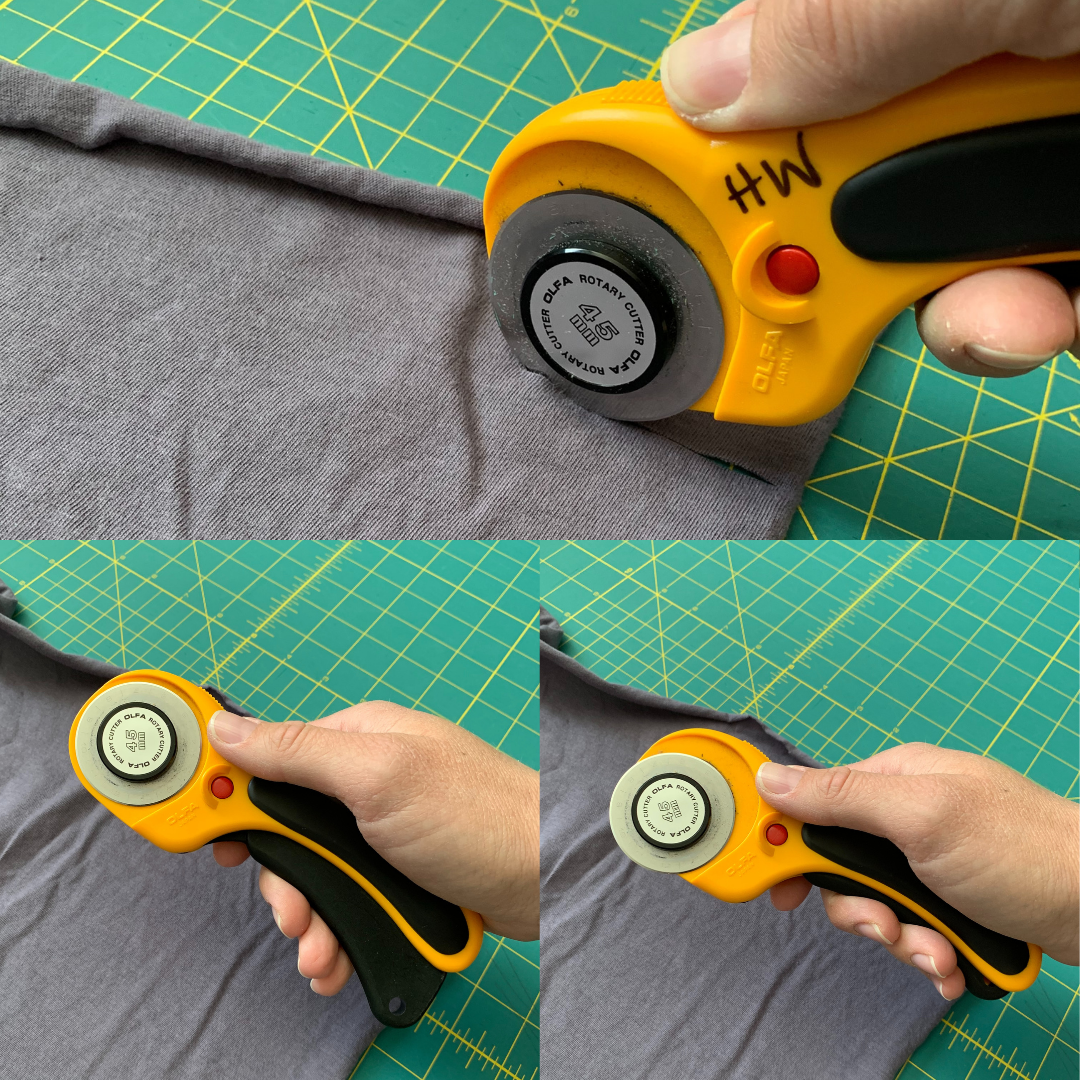Thursday Tip with Hali - Rotary Cutters
ID: Two white hands are holding up two different styles of rotary cutters against a grey background. One cutter is yellow/black and the other is purpleish/navy with yellow. Both rotary cutters have a 45mm blade.
Thursday Tip // Rotary Cutters
If you are new to sewing you may be wondering “why all the fuss about rotary cutters”? For the most part, I think we can assume everyone is familiar with scissors and is comfortable using them. Rotary cutters may not be as familiar and as a new sewist you might be wondering whether it’s worth the investment to get yet another sewing tool.
When I got back into sewing and decided to make a real effort to make my own clothes I was very overwhelmed by all the tools out there. I knew I didn’t need everything but I wanted to start on the right foot with tools that would last and be worth the investment. After trying a rotary cutter for the first time I was totally hooked. I love how much more control I have with the blade and I often feel I can be more precise and my cuts are straighter compared to when I use scissors. I love not having to pin my pattern pieces to my fabric either! What a game changer and sooo much quicker.
Obviously this set up isn’t for everyone. If you use a rotary cutter you must also have a cutting mat and some type of pattern weights are helpful too. Cutting mats come in a variety of sizes but can take up quite a bit of space so that is something to consider.
ID: top photo: a white hand is using the ergonomic rotary cutter to cut some grey knit fabric on a green self-healing cutting mat. The initials “HW” can be seen in black sharpie on the side of the rotary cutter. Bottom left: the same rotary cutter is held to show the blade closed. Bottom right: the same rotary cutter is held with handle squished and blade open.
Rotary cutters range in size from about 21mm to 60mm and most can be used both right and left-handed. The smallest cutters are great for smaller pieces and curves like with lingerie or swimwear but can also be handy for tight curves on larger pattern pieces. A pretty standard size is a 45mm blade; these are quite easy to find as most sewing shops will carry them in a variety of styles.
My current favourite is the OLFA Deluxe rotary cutter with an ergonomic handle. It fits nicely in my hand and the blade pops out when you squeeze the handle and pops back in when you let go. It also has a safety lock for when it’s not in use. Larger sizes like the 60mm blade would be well suited for straighter cuts as they don’t handle tight curves as well. Typically you would use larger blades for larger piece work as in quilting or leatherwork.
ID: Top photo: A white hand is using a 45mm rotary cutter to cut white tracing paper on a green self-healing cutting mat. Bottom left: the same rotary cutter is being held up to show the blade closed. Bottom right: the same rotary cutter is being held to show the blade open.
Similar to sewing machine needles, rotary cutter blades will dull over time and need to be replaced or sharpened. I have not personally used a sharpener but it could be more cost effective if you find one that works well. We all know that you are supposed to have scissors specifically for fabric and a different pair for cutting paper. The same can be said for rotary cutters. If you use the same blade for both fabric and paper you may notice it becomes dull much faster and you may be replacing blades more often. I recently purchased a second rotary cutter in the same size (45mm) as my ergonomic cutter to use it specifically for paper. Now once my blades are dull from cutting fabric I just keep them for cutting paper patterns and switch them into my second rotary cutter as needed.
I love giving tools a second life, don’t you?!



